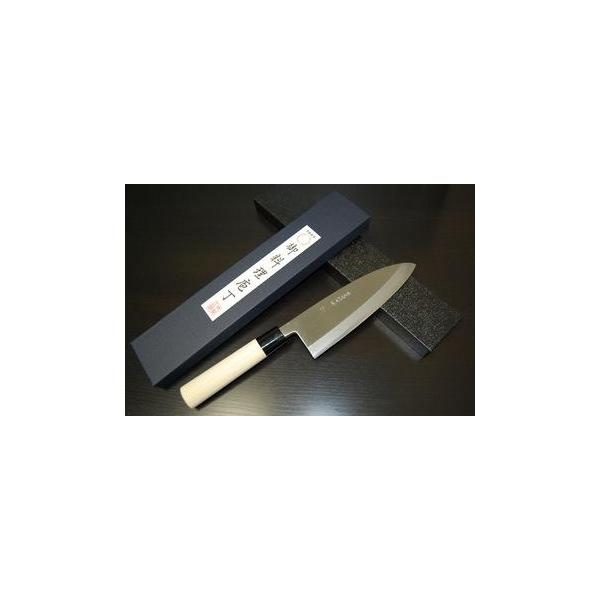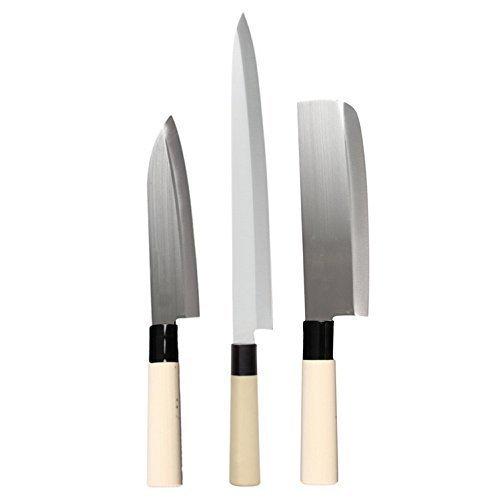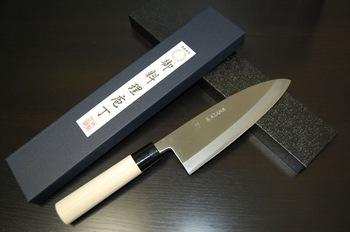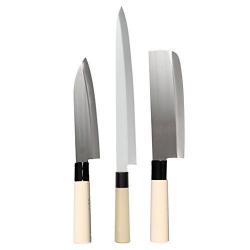Basic Guide to Different Japanese Knife Types
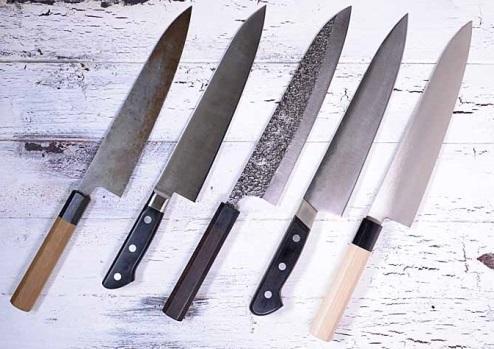
Are you ever puzzled by the wide array of Japanese knives (包丁or Hōchō) available on the market and what the name means? In contrast to the durability of everyday German knives, Japanese knives are known for their sharpness and design. Four main distinguishing features in Japanese knives are the handle, blade edge, blade material and construction, which we will delve into deeper detail in another article.
In this guide, we will breakdown and compare some of the most common knife types available below:
Gyuto knife牛刀 = This is the Western equivalent of Chef’s knife. In Japanese, it literally means beef knife. It has a sharper blade tip and edge, with a thinner thickness as well. Thus, it is lighter weight and more versatile for tasks that require agility and dexterity.
Santoku三德庖丁= This is a unique Japanese knife that has become popular in Western world. The blade has a flatter edge with a rounded sheepfoot tip. The straight edge allows for easy cutting and the blade surface has concavity that creates air pockets while cutting which prevents tomato or other food from sticking on the blade.
Nakiri菜切 = This is a vegetable knife with rectangular shape. It also resembles a miniature Chinese cleaver chopper, with average length of 165 to 180mm. The flat shaped knife blade makes it easy to dice and slice vegetables.
Petty Knife = This is the eastern hybrid version of utility & paring knife combined. This is good for cutting small fruits and carving dexterous designs.
Sujihiki筋引 = This is a large knife that is used to cut large pieces of meat.
Hankotsu = This is a carving knife that is used for cutting big pieces of meat.
Chukaboho = This is the Japanese name for the Chinese cleaver chopper. It has a large rectangular blade that is good for smashing, chopping, and dicing food. The handle is typically cylindrical shape for comfort grip.
Yanagiba or shoubu-bocho柳刃包丁= This knife type is used for slicing fish sashimi and is pretty much used by all Japanese or sushi chefs. It has a long size length of 270mm to 335mm with thin blade width, resembling a dagger. It has a single-beveled edge which require great knife control.
Deba bōchō 出刃包丁 = This is a thick-gauge knife that is designed to cut through the toughest meat or bones such as skull or rib. Most are 5mm to 9mm thick which creates a big wedge for cutting through those stubborn parts of the meat. They generally range from 125mm to 215mm in total length.
Magurokiri or maguro bōchō = This is a knife for cutting tuna. It has a very long handle and can range from 40 cm to 150 cm, similar to the size of a sword. It is commonly used in wholesale fish market where the butcher uses it to slice open the whole tuna fish.
Kiritsuke = This is a similar variant of the yanagiba knife with an angled tip.
Usuba bōchō 薄刃包丁 = This is a very thin knife with flat blade profile for slicing very thin slices. It looks similar to Nakiri knife but it is designed for more professional use because it has a single-bevel edge, whereas Nakiri has double bevels.
Mukimono = This is used together with usuba knife for decoration, with sizes of 150 mm to 210 mm.
Honesuki = Western version of boning knife. The angled tip makes it easy to slide between the bone and the tendon to separate it.
We manufacture & supply a wide variety of culinary knife, kitchenware & tableware products. Please contact one of our product specialists for more information.
